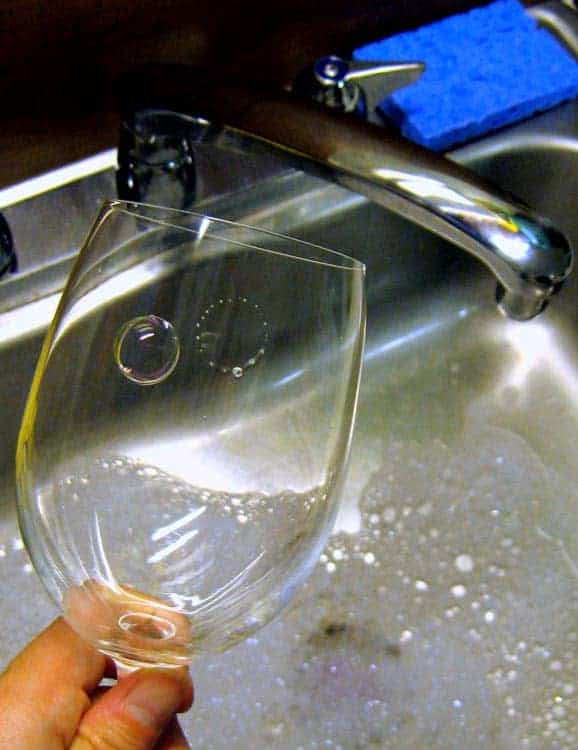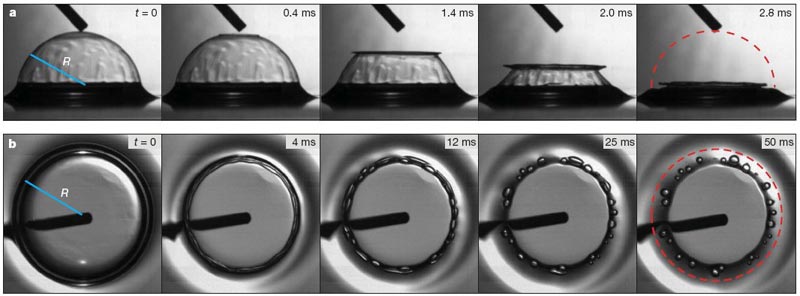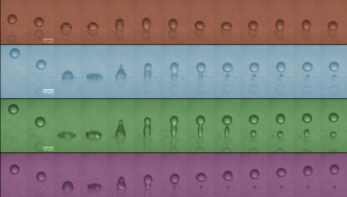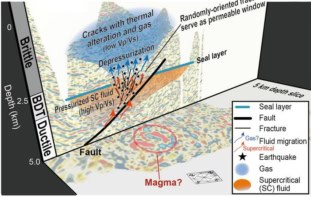
Researchers in the US have used a high-speed camera to watch the bursting behaviour of bubbles lying on the surface of a glass slide – and found they burst in a cascade that produces increasingly smaller bubbles and eventually jets of liquid. The study, carried out by Jacy Bird and colleagues at Harvard University, could help to improve processes used to make foamy materials. It could also boost our understanding of how ocean bubbles inject aerosols into the atmosphere.
Bird was inspired to do the research after noticing that a ring of small bubbles is produced when a large bubble bursts on a surface. To study the process in more detail, the team covered a glass slide in a film of water plus surfactant and then used a syringe to blow a bubble that is a centimetre or so in diameter. The bubble, which remains on the slide and therefore assumes a hemispherical shape, was pierced at its summit. The researchers then used their high-speed camera to see what happens next.
The bursting was seen to occur in two distinct steps. Once the bubble is pierced, capillary forces – that beforehand squeeze the bubble and pressurize the air inside – expand the initial hole at the top of the bubble. The pressurized gas inside the bubble escapes through this hole, causing the liquid film away from the hole to move inwards. However, the liquid right at the edge of the hole has gained enough inertia to continue to move outwards and thus resists the inward pull of the collapsing bubble.
Unstable doughnuts
According to Bird, the resulting tug-of-war stretches out the rim and creates a sharp fold (see “Folding the rim”). When the rim reaches the glass surface, the fold entraps the air beneath it to create two concentric doughnut-shaped bubbles. This all occurs in about 3 ms.
However, these doughnut bubbles are unstable and, in the second step of the process, they begin to break up over a period of about 50 ms into a ring of smaller hemispherical “daughter” bubbles on the surface. The team was then able to pop these daughter bubbles when they were on a solid surface and saw the same process over again. However, on a liquid surface, the daughter bubbles penetrate the liquid so that they are no longer hemispherical. In this case, their collapse resulted in narrow jets of liquid rising from the surface.
The team repeated its experiment using a number of liquids with different viscosities and surface tensions and with bubbles of different radii. Three distinct type of behaviour were observed.
In silicone oils, which are very viscous and have a low surface tension, no daughter bubbles were formed. However, in glycerol-water-soap solutions – with intermediate values of viscosity and surface tension – daughter bubbles were formed by two concentric rings. Finally, using samples of local river water, which have low viscosity and high surface tension, they found that the bubbles collapsed to form a single ring and also formed daughter bubbles.
Fine tuning foams
Armed with these observations, Bird and colleagues were then able to create a mathematical model that reproduced the folding effect. Bird believes that a better understanding of this cascade process could help researchers to fine tune processes for making foams. “We are currently trying to understand the implications for industry,” he told physicsworld.com.
Bird is also interested in looking at bubbles in more exotic materials including lava – the results of which could lead to the development of new ways of studying the properties of molten rock. “Pictures of lava bubbles could tell us something about lava that can’t be measured directly because the material is too hot,” he says.
Bird also believes that the research could further our understanding of the atmosphere because jets emerging from bubbles on the surface of the oceans are known to be a major source of aerosols. In particular, the research could help scientists gain a better understanding of how different sized bubbles affect this process.
The research is described in Nature.




